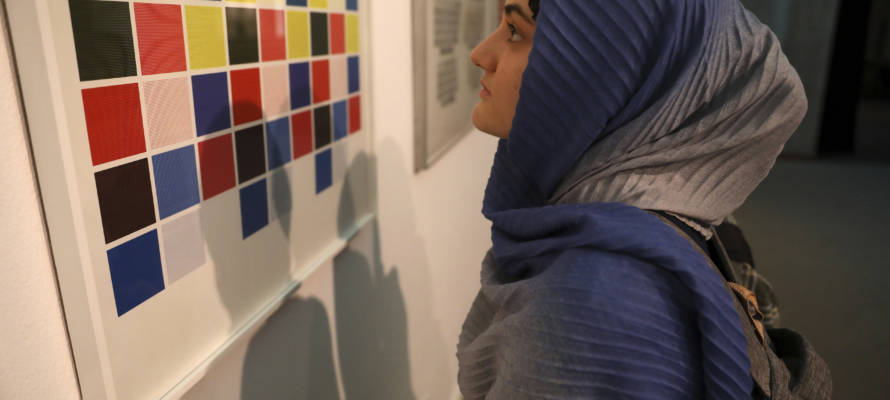Iranian authorities shocked the world by finally displaying the work of Jewish artist Sol LeWitt, among a number of other giants from the art world.
By United with Israel Staff
At the behest of the country’s ruling mullahs, Iranian authorities attempt to keep any remnants of Western influence out of the Islamic Republic.
This means banning “deviant” artists who “attack Iran’s revolutionary culture,” which include troves of precious works collected by Iran’s deposed leader, Shah Mohammad Reza Pahlavi, and his wife, the former Empress Farah Pahlavi.
The Shah and his wife built the Tehran Museum of Contemporary Art and acquired a one-of-a-kind collection of works by the likes of Claude Monet, Pablo Picasso, Mark Rothko, and Jackson Pollock, among others.
Only two years after the museum’s opening, Shiite extremists overthrew the Shah’s government and hid the collection in the museum’s vault, reported the Associated Press.
The precious works “offend[ed] Islamic values” and “cater[ed] to Western sensibilities,” added the AP report.
As a result, some of the greatest works from the cubist, surrealist, impressionist, and pop art schools collected dust for 40 years.
That changed this week when some of the work’s were finally put on display. These include one of Sol Lewitt’s most famous serial pieces, “Open Cube.”
LeWitt, born Solomon, was a Jewish artist who helped pioneer the schools of conceptual art and minimalism. He excelled in a number of mediums from drawing and printmaking, to photography, painting, and installations.
The artist exhibited his work at Jewish institutions in the West, including the Jewish Museum in New York.
LeWitt’s work is also on display at the Israel Museum, in the capital of the Jewish state, Jerusalem.
In addition to showing his work in Israel and distinctly Jewish settings in the West, LeWitt created art about the Jewish experience. In 1987, for example, he made “Black Form: Memorial to the Missing Jews” installation for the prestigious Skulptur Projekte Münster. The piece was created not only to honor the Jews killed in the Holocaust, but also to acknowledge the absence of their descendants in cities that once were home to thriving Jewish communities.
Whether Iranian officials are aware of LeWitt’s background remains unknown.
The Iranian regime regularly spouts genocidal anti-Jewish rhetoric, denies that the Holocaust occurred, and threatens to wipe the Jewish state of the map.
After years of denials, the Islamic Republic also recently made shocking admissions regarding its ability to create nuclear weapons.
